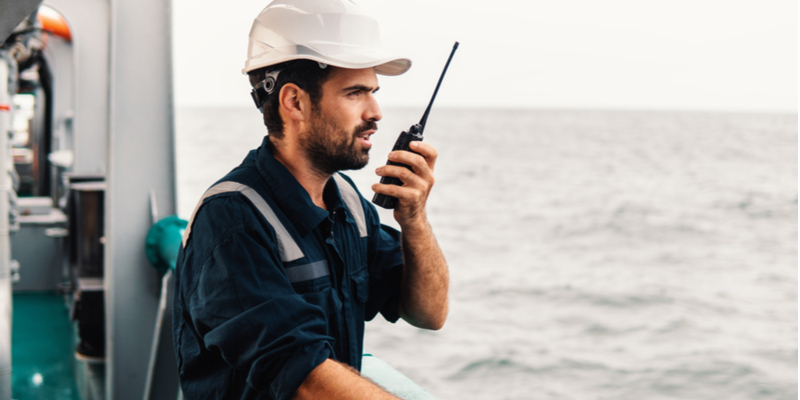Navigational and safety communications must be simple and unambiguous when it comes to ship to shore, shore to ship, or ship to ship communication. That’s why there is a list of standard marine communication phrases and rules to help simplify things. This is especially important in today’s modern world where a host of international trading vessels navigate the same waters, many speaking different languages. Without some sort of standardized communication platform, the risk for confusion and error is far too great.
As decided by the 1973 IMO Maritime Safety Committee, there must be a common language that is used for navigational purposes, and that language is English. As a result of this decision, the Standard Marine Navigational Vocabulary (SMNV) was created and adopted in 1977 and amended in 1985.
Since then, it has been updated several times to better reflect the needs of the modern-day world. Any officer charged with navigating a ship containing 500 gross tonnage or more must prove their capability to understand and use the SMCP in order to receive certification. This is specified under the International Convention on Standards of Training, Certification and Watchkeeping for Seafarers.
While the list of standard marine communication phrases is long, much too long to fit in one blog, we are going to go over some of the key points found within the guidelines. For more information, please reference the full report put together by the International Maritime Organization.
General Overview of Marine Communication Rules & Phrases
What to avoid
There are certain words and phrases that are warned against using when communicating out on the water; this includes the use of synonyms, contracted forms, and fully worded answers to “yes/no” questions.
Typographical conventions
() Brackets are used to signal that a part of the message – the part within the brackets – can be added where relevant.
/ Oblique strokes are used to indicate that the items on either side of the strokes are alternatives of one another.
…. Dots are used to indicate that the receiver is to fill in the area where the dots occur with relevant information
The use of italic letters signals that some type of information is being requested.
~ Tildes are used as stand-ins for the invariable part of an aforementioned standard phrase which is then followed by a variable addendum.
Spelling out letters
If something is spelled out, there are a table of letters and corresponding words that must be used so that there is no confusion. For instance, A is alfa; B is bravo; C is Charlie.
Pronouncing digits and numbers
When numbers are used, they may be spelled out or pronounced using a specialized tone. For instance, the number 0 is pronounced ZEERO, and 1,000 is TOUSAND.
Message Markers
There are eight Message Markers that can be used for shore-to-ship and ship-to-shore communication.
- Instruction
- Advice
- Warning
- Information
- Question
- Answer
- Request
- Intention
Answering Questions & Requests
When responding to a yes or no question – the appropriate response is to say “Yes…” or “No…” – and then follow it up with the specified phrase in full.
If the requested information is not available, the appropriate response is: “stand by” – followed up with the time in which the information will become available.
If the information is unavailable for the foreseeable future, the response is “No information”
The Importance of Maritime Two Way Radios
Along with a standardized marine language, reliable two-way radios are crucial to maintaining peace and safety out on open waters. At Highland Wireless, we specialize in marine communication. Learn more

